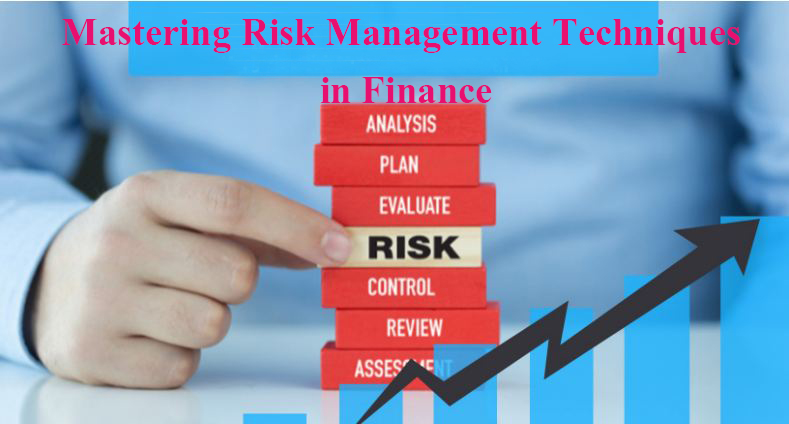Risk management techniques in finance | Are you looking for a way on how to mastering Risk management techniques in finance? if yes, This page contain the key risk management techniques in finance to help you mitigate risks and optimize returns. Read through
About Risk management techniques in finance
Effective risk management is essential for preserving capital, achieving financial goals, and navigating the complexities of financial markets.
Whether you’re an individual investor, a financial institution, or a corporate entity, understanding and implementing risk management techniques is paramount for long-term success.
Risk Identification and Assessment:
Begin by identifying and assessing the various risks inherent in your financial activities, including market risk, credit risk, liquidity risk, operational risk, and systemic risk.
Conduct comprehensive risk assessments to evaluate the probability and potential impact of adverse events on your financial objectives and portfolio performance.
Diversification:
Diversification is a fundamental risk management technique that involves spreading investments across different asset classes, sectors, and geographic regions to reduce overall portfolio risk.
By diversifying your investments, you can mitigate the impact of individual asset or sector-specific risks and enhance the resilience of your portfolio to market fluctuations.
Asset Allocation:
Asset allocation involves strategically allocating capital across different asset classes, such as stocks, bonds, cash, and alternative investments, based on your risk tolerance, investment objectives, and time horizon.
A well-balanced asset allocation strategy can optimize risk-adjusted returns by capitalizing on the risk-return characteristics of different asset classes.
Hedging Strategies:
Hedging strategies are used to offset or mitigate specific risks within a portfolio by taking opposite positions in related assets or derivatives contracts.
Common hedging techniques include options, futures, forwards, and swaps, which can be employed to hedge against market volatility, currency fluctuations, interest rate changes, and commodity price risk.
Stop-Loss Orders:
Stop-loss orders are risk management tools used to limit potential losses on investment positions by automatically selling or exiting a position if it reaches a predetermined price level. Stop-loss orders help investors manage downside risk and protect capital during periods of market volatility or adverse price movements.
Risk Budgeting:
Risk budgeting involves allocating risk capital or risk budgets to different investment strategies or portfolios based on their risk-return profiles and correlation with other assets.
By establishing risk limits and monitoring risk exposures, investors can optimize portfolio diversification and align risk-taking with investment objectives.
Stress Testing:
Stress testing involves simulating extreme scenarios or market conditions to assess the resilience of investment portfolios or financial institutions to adverse events. Stress tests help identify potential vulnerabilities, quantify potential losses, and evaluate the effectiveness of risk management strategies under extreme conditions.
Scenario Analysis:
Scenario analysis involves evaluating the impact of different macroeconomic scenarios or market developments on investment portfolios and financial positions.
By analyzing various scenarios and their likelihood of occurrence, investors can make informed decisions and adjust their risk management strategies accordingly.
Liquidity Management:
Liquidity management is crucial for ensuring financial stability and resilience to unexpected cash flow disruptions or liquidity shocks. Maintain sufficient liquidity buffers, such as cash reserves or short-term investments, to meet short-term funding needs and withstand periods of market illiquidity or funding stress.
Continuous Monitoring and Review:
Risk management is an ongoing process that requires continuous monitoring, review, and adjustment in response to changing market conditions, regulatory requirements, and business dynamics.
Regularly assess risk exposures, performance metrics, and compliance with risk limits to identify emerging risks and adapt risk management strategies accordingly.
Conclusion
mastering risk management techniques in finance is essential for preserving capital, managing volatility, and achieving long-term financial success.
By incorporating risk identification, diversification, hedging strategies, and continuous monitoring into your investment process, you can mitigate risks, optimize returns, and navigate the uncertainties of financial markets effectively.
Consulting with a qualified financial advisor or risk management expert can provide valuable insights and guidance in developing and implementing robust risk management strategies tailored to your individual needs and objectives.
Maximizing Returns: Effective Cryptocurrency Investment Strategies



